On my just-finished Caribbean holiday, I decided to try an experiment.
For most of my travel shots I use the super-wide lens, but I always bring a long lens as well. Normally, the Canon 70-200 f/2.8L IS. A superb lens, but heavy and big.
So this time I used an all-round consumer lens on my second camera- namely, a Tamron 18-270 mm f/3.5-6.3 Di II VC PZD stabilized lens for Canon. Here it is:
And here it is, pulled out to its full length:
I decided to try this lens for three reasons:
- To see the differences (I have only used expenive lenses for many years)
- For convenience – 18-270mm in one small, light package.
- For length: 270mm on my crop camera, the 7D, is 432mm!
So how did it do?
Obviously, the convenience stands out. One lens, not three. And the lower weight. I certainly appreciated that. And the longer effective length. And if I had bought this lens, instead of borrowing it from the importer, I would have also appreciated the great price point.
Through the vacation, the lens performed well. No issues, no trouble focusing, no noisiness, no trouble of any sort. It did what it was supposed to do. I used it in one-shot focus mode, and in that mode, focus worked fine. Vibration Control (“IS” in Canon terms) also worked well – and this function is essential on a long lens.
As a regular and intelligent reader, you know there is a price for everything.
In this case, that price is mainly the smaller aperture (f/6.3 when zoomed out, as opposed to f/2.8 on my “regular” pro lens), with additional “small reasons”. Many people would not even notice these, but as a spoiled pro lens user, I do.
So you do need to keep in mind I am comparing apples with oranges here… given that, I see little things like:
- The lens drops when you aim it down – hence the need for a “lock” button to prevent it doing that.
- Turning the zoom is fairly smooth, but not as smooth as on my 70-200. The zoom smoothness is also not the same all through the zoom range.
- Having used pro lenses for so long, the fact that the lens would not go down to f/2.8 kept making me think I was in the wrong mode – each time it took me a moment to realize why the numbers weren’t doing what I expected them to!
- Especially when zooming in all the way, this lens is not quite as sharp as the oranges it is being compared to. Don’t be put off by that – as said, I am comparing it to a dedicated, heavy, $2.500 lens. The real question is: is it sharp enough? You judge: click on images and then click on “show full size”. This is not full size as it came out of the camera, of course, but it gives you an idea. Of course a tad of Lightroom sharpening takes care of most issues – don’t “pixel peep” too much. (Also – longer lenses are less sharp because of the air moving in between yo and your subject – do not mistake that for lens sharpness!)
- More barrel and pincushion distortion at the wide and long ends.
A few sample shots:
A wide angle shot; note the pincushion distortion:
I was happy (and surprised) to see no appreciable amount of chromatic aberration: I would have expected more on this lens.
Image quality seems a little less when you zoom in all the way – but that is to be expected, and in my view, 270mm is a bonus gift horse that one should not look in the mouth.
So when would I use a lens like this?
- When I want 270mm – a great long focal length.
- When I want convenience, and an “all in one” package.
- When weight and size are an issue.
- When price is important.
- When I want to minimize lens changes, eg in dusty environments.
- When I can only bring one camera.
- When I expect to quickly need to change from wide to telephoto.
- When there is plenty of light.
When would I not use it?
- When shooting in low light environments. f/6.3 is enough in the sun or in a studio – perhaps somewhat less so in low light.
- When quality is utterly paramount, like when shooting stock photos.
- When shooting sports (I did not test continuous focus but I expect it would not be as good as the Canon lenses here).
This experiment was successful – I would consider carrying a “one lens does it all” again in the right circumstances, and if so, if only because of its excellent 18-270mm range, this Tamron is high on the list.
Note: As is the norm with my reviews and product mentions, I have not been paid anything for writing this review.

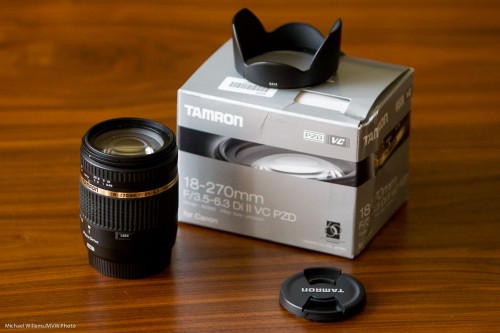
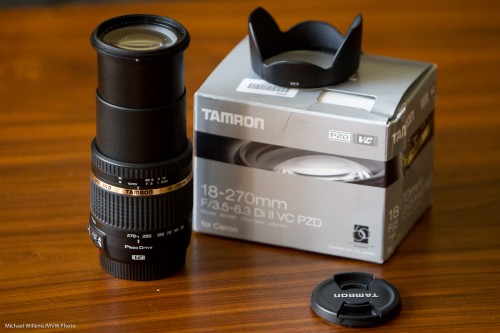
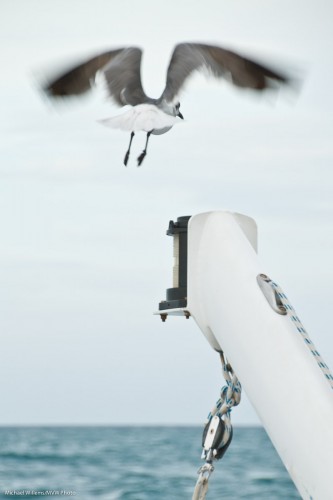
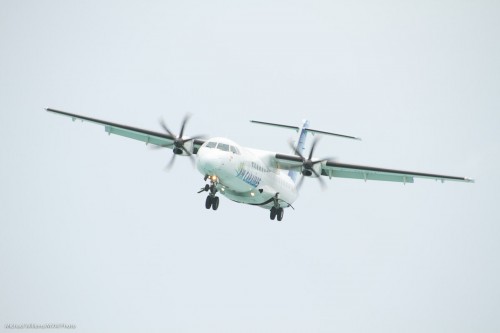

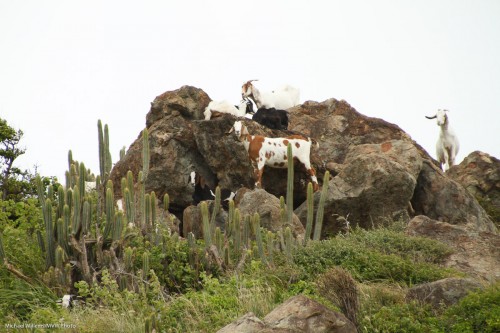
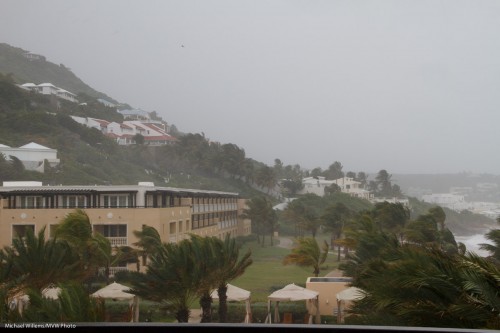
I have the Sigma 18-200, Sigma 18-250 and Canon 28-300 L (which is big and heavy). They are my favourite lenses because they produce quite good quality with convenience. I have not tried the Tamron. The Sigma lenses work well in AI servo mode. Depending on the subject, they can deliver excellent results after dark, too.
I’m a novice photographer (approx. 2 years). I shoot with a Nikon D90. I am thinking of trading in my Nikon 18-105 mm F3.5-5.6 AF-S and my Nikon 70-300mm VR F4.5-5.6 IF-ED for the Tamron 18-270mm? Do you think I will be sacrificing quality for convenience? Your thoughts.
That question is hard to answer by anyone but you. So my advice: Go try it. Stores will let you, I’m sure.
Glad to hear you like this lens since it’s the one that is almost always attached to my camera. I just like the convenience of having such a wide range. Of course I haven’t had the pleasure of using a L-lens so it’s hard to compare it with others.
Hi Michael
I’m debating between the Canon 18-200 and Tamron 18-270 for a travel lens. Besides the fact the Tamron zooms further, are there any other major differences between these two lenses?
Many thanks
D
The “brand” lenses are often a little better in terms of build quality and quality control – and on the other hand the Tamron has that GREAT range and I liked its build too. So the most important thing is: try them both. Hold them. Use them. Which one feels beter? Test them. Judge and then buy whichever one you prefer.
Good advice! I tested them on my own camera body. Tamron much lighter and smaller than Canon, which I wanted for traveling. When camera is pointed to ground, Canon suffered from lens creep whereas I didn’t find this with Tamron. PZD was bit quicker than canon’s non-USM version with auto-focus.